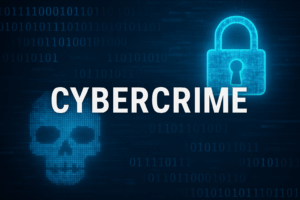2021 Detection and Response Planning, Part 4: Planning for Success with a Cloud SIEM

This is the fourth and final installment of our series around 2021 security planning. Through this series, we talked to a previous CISO about how to tackle annual security planning, looked at driving more efficient threat detections, and also explored the benefits of greater SOC automation. In this post, we’ll explore how a cloud SIEM, like Rapid7 InsightIDR, may be more relevant and impactful than ever before.
Security operations centers (SOCs) are not unfamiliar with an uphill battle. The ever-growing complexity surrounding security and the industry-wide resource and skills gap have been well documented for some time. For many teams, these challenges may feel amplified heading into annual planning this year:
- More team members are stretched thin and wearing many hats. An (ISC)² survey from earlier on in the pandemic found that the lines continue to blur between security and IT as team members are tapped to help fill gaps on both sides.
- Teams are dealing with accelerated digital adoption. As organizations scrambled to stay operational, adoption of remote infrastructure and web applications surged. For example, Zoom has grown over 300% already this year.
- There’s been more threats to deal with. Insider threats alone are up by as much as 47%. Whether it’s due to BYOD, frustrated employees, deprioritized security training, kids installing games, or other shadow IT on devices, insider threats are up and adding to security’s mounting headaches.
The landscape may feel daunting for teams or new CISOs tasked with navigating these obstacles, but a modern, cloud SIEM approach may offer some relief and get teams on track toward successful detection and response.
Security Planning Tip: How has your team and environment changed this year? How have your processes and technologies changed to adapt to these new challenges? A cloud SIEM can help teams work more efficiently and keep pace with digital transformation.
NEVER MISS A BLOG
Get the latest stories, expertise, and news about security today.
Subscribe
Eliminate distractions, and increase collaboration
Is there a more helpless feeling than being in the weeds at work and then being asked to take on more? For many security professionals, this is the norm, and unfortunately, traditional, on-premises SIEMs have long made the problem worse. With tedious deployment, hardware management, and ongoing operations, the burdens of a traditional SIEM are arduous and distract from actual cybersecurity work.
With an effective cloud SIEM, these management burdens go away. A good cloud SIEM with a SaaS interface means no hardware to worry about and no upgrades to work through. In short, teams have the ability to focus on what really matters.
The other great thing about a SaaS SIEM—particularly as teams work remotely and potentially even supplement their team with third-party support—is the availability of your SIEM anywhere. Whether you’re in the SOC, working from a home office, or collaborating with a consultant a continent away, a SaaS approach means all team members are looking at the same details and data in the same interface.
Related: 10 Key Questions to Ask Vendors When Evaluating a Cloud SIEM
Keep pace with evolving modern environments
In part one of these series, we explored the importance of cloud-based processing and storage to keep up with the demands of the modern IT environment.
Jon Oltsik, principal analyst and fellow at ESG, noted in DarkReading, “Interestingly, some progressive organizations believe that scalable, burstable cloud-based processing and storage resources can provide analytics opportunities they simply can’t achieve with homegrown on-premises efforts. This is particularly true with the application of machine-learning algorithms on massive security data sets.”
As teams rapidly adopt new technology, a cloud SIEM can provide the flexibility and scale required to continue to take on monitoring new applications and environments as they evolve. Where traditional SIEMs were built for log aggregation of more legacy data sets, a modern cloud SIEM can provide not only the capacity, but also analytic capabilities to quickly turn modern data ingestion into actionable insights.
Stay ahead of evolving threats
With a SaaS SIEM approach, teams have access to the latest upgrades, threat intelligence, and features as soon as they become available. As new threats evolve, this content can be immediately added to the SIEM to recognize the latest threats, without needing to go through a large upgrade process.
A modern SIEM can also help ingest more diverse data across your environment. For example, Rapid7’s cloud SIEM, InsightIDR, supports extended detection and response, ingesting data across endpoints, users, logs, network traffic, cloud environments, and more. While new threats may evade traditional detection techniques, a cloud SIEM with user attribution can help quickly recognize anomalous behavior that may signal malicious activity. Learn more about the features available in InsightIDR.
It’s worth a look
One of the great things about a cloud SIEM is that it’s typically much easier to evaluate and get a feel for than a traditional SIEM. With InsightIDR, we regularly see customers up and running in as little as a day in their own environment!
Rapid7 is committed to continuing to help both our customers and the broader security community navigate new challenges as they arise and stay ahead of attackers. We hope this series has been helpful as you’re tackling security planning this year, and if you have questions or want to learn more about how we can help, please reach out! We’d love to connect.
Cloud vs. Traditional SIEM Technology: What Makes Sense for Your Organization?
Get Started
If you like the site, please consider joining the telegram channel or supporting us on Patreon using the button below.


![[SARCOMA] - Ransomware Victim: CARSTAR Business Group 3 image](https://www.redpacketsecurity.com/wp-content/uploads/2024/09/image-300x300.png)


